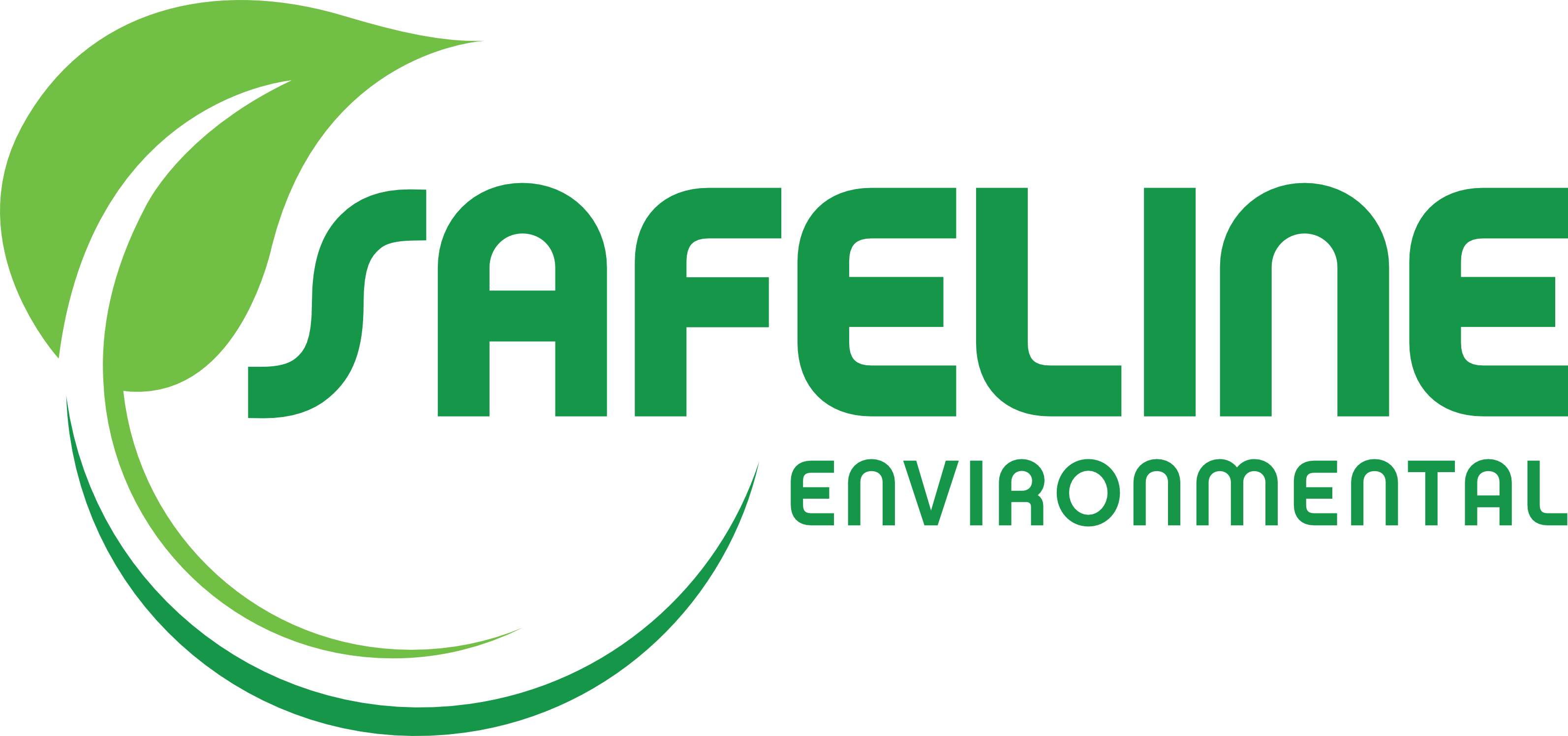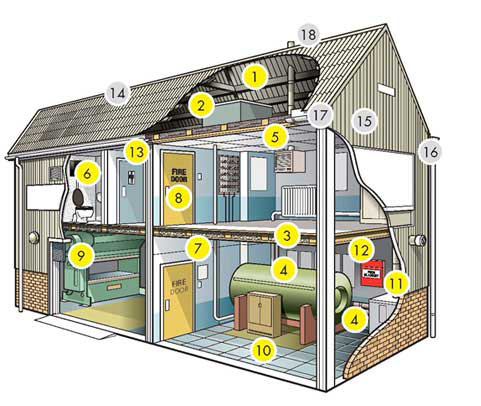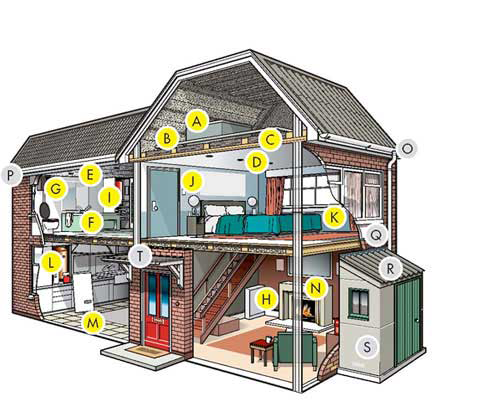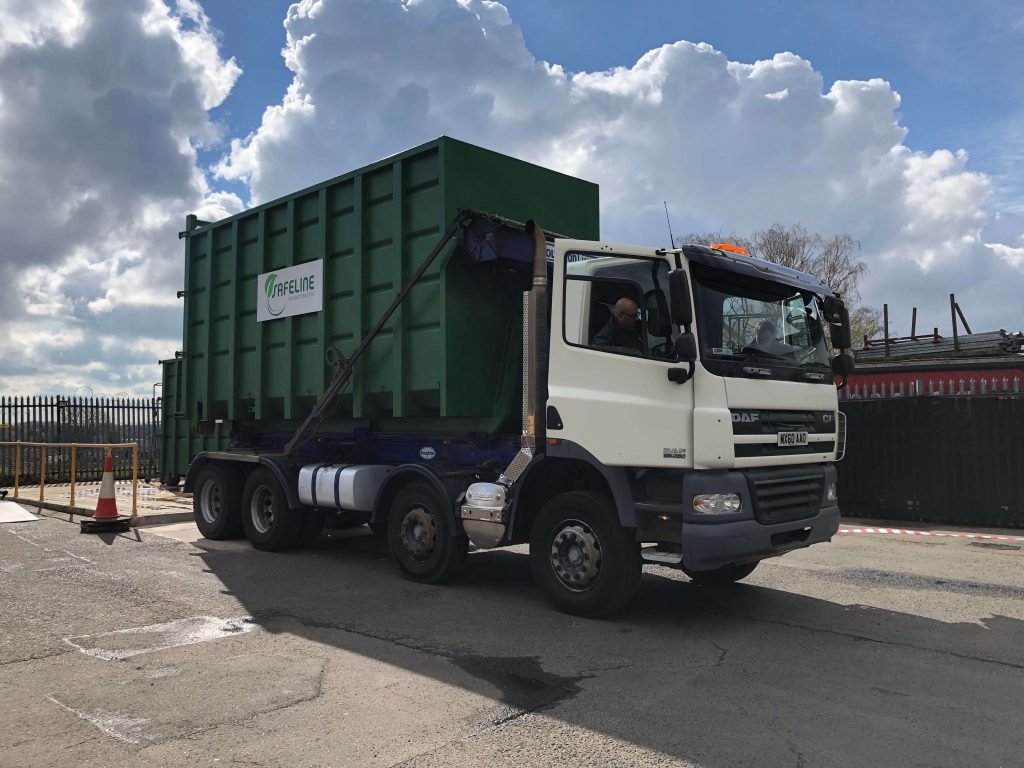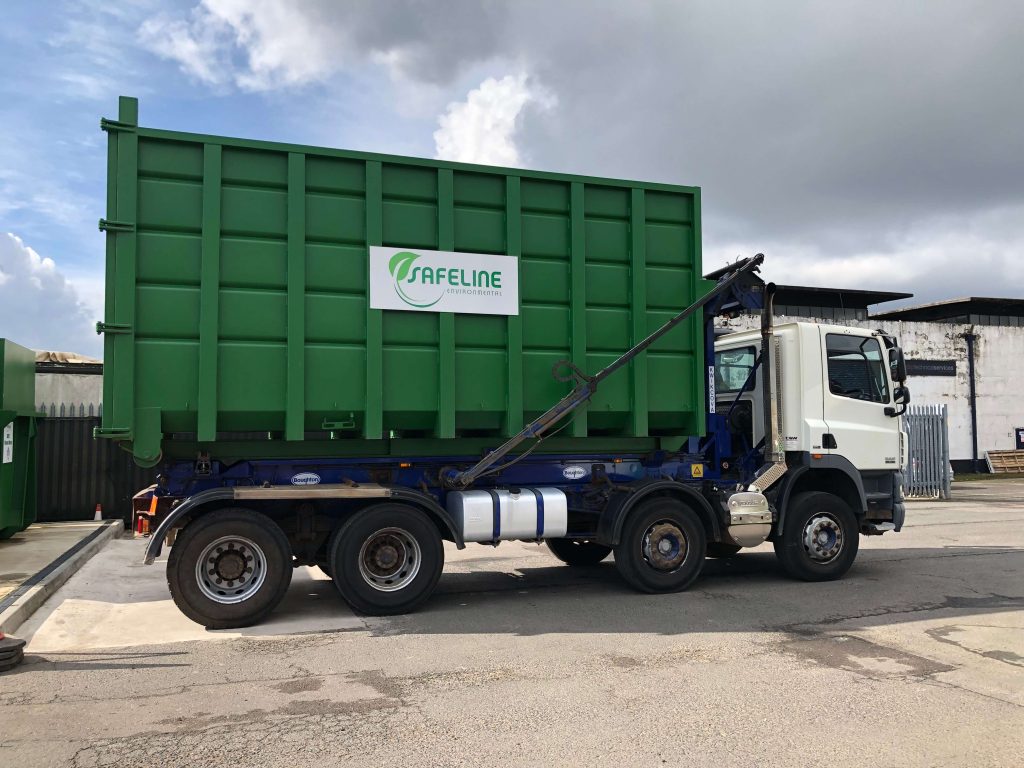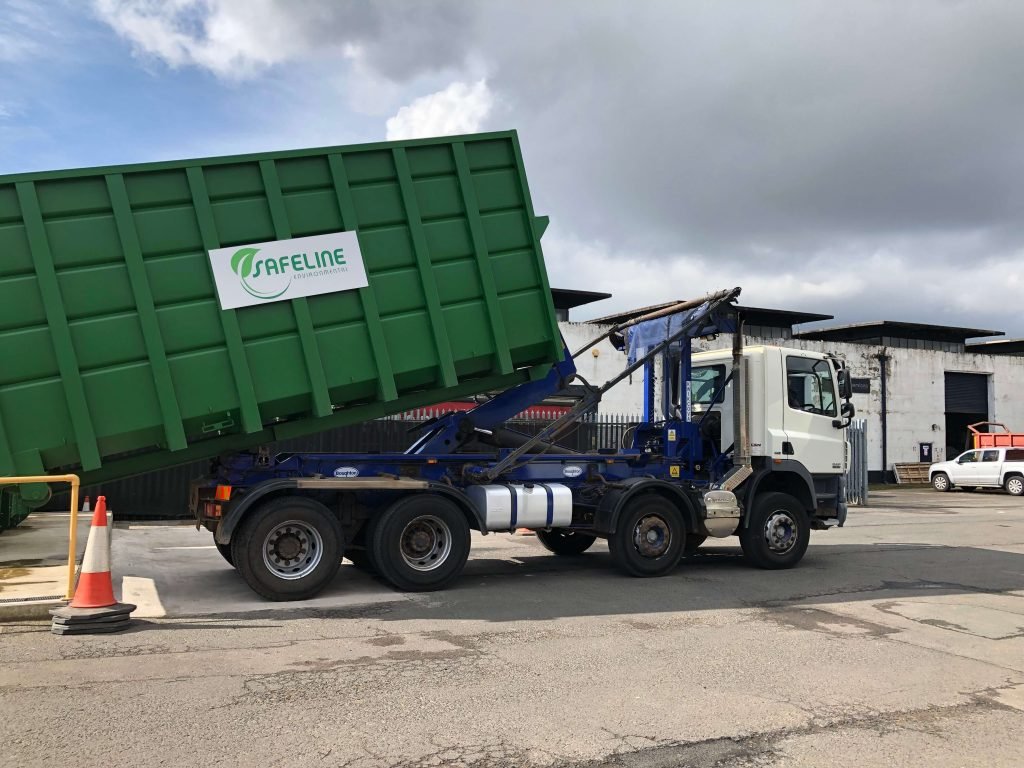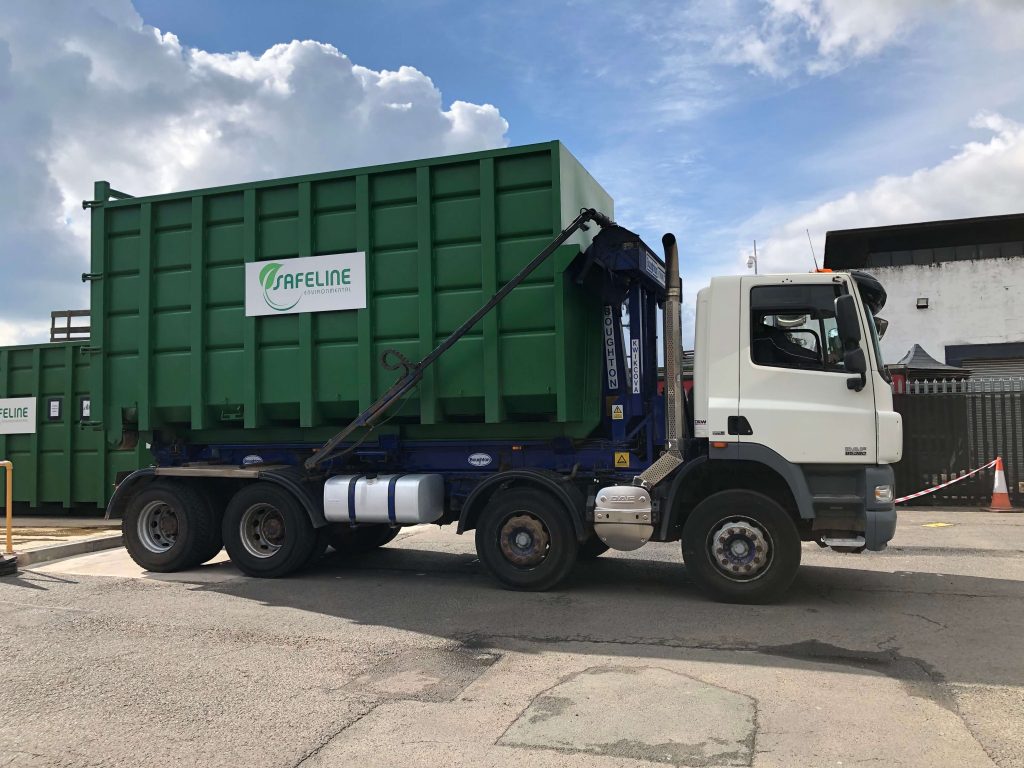Asbestos Removal Guide
In this essential asbestos removal guide, we will go in-depth and discuss all of the major types of asbestos, where to find it and what it looks like. We will cover how to remove asbestos and the different factors you need to consider in terms of disposal.
For everything, you needed to know, read on.
Source: Health and Safety Executive
How to remove asbestos
Where do you find this?
Insulation on the underside of roofs and sometimes sides of buildings and warehouses. Also used as fire protection on steel and reinforced concrete beams/columns and on the underside of floors.
It was very easy to overspray or get a 'splash back' from the equipment used to apply this so there is likely to be debris around the sprayed area.
What does this look like?
Usually white or grey in colour with a rough surface, although they may have been painted.
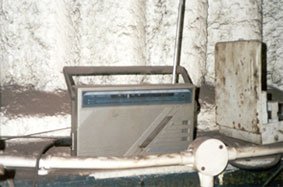
Spray coated panelling
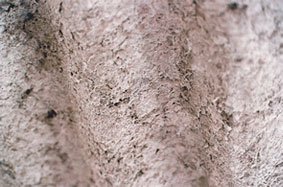
Spray coated roofing sheets
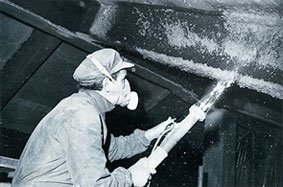
Under roof spray coating
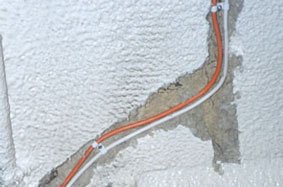
Spray coating as filler
How dangerous is this?
This contains up to 85% asbestos and breaks up very easily. It is one of the most dangerous materials containing asbestos. Even minor disturbance of sprayed coatings can release large quantities of asbestos fibres into the air where they can be breathed in.
Where do you find asbestos cement?
Asbestos cement is mainly a mixture of chrysotile (white asbestos) and cement, moulded and compressed to produce a range of asbestos cement products. You can find asbestos cement in many places inside and outside buildings such as:
Asbestos cement roofs
These are mainly made up of large sheets of corrugated asbestos cement; they are often found on industrial or farmyard buildings, but can also be found as roofs on garages and sheds. They are often covered in moss and other growths as they've been there for many years.
Asbestos wall cladding
This has a shape and structure similar to roof sheeting and is often found on walls/as walls of buildings with asbestos cement roofs.
Asbestos downpipes and gutters
These are often attached at the end of cement roofs in warehouse-type buildings.
Asbestos cement flues
These may be found in boiler systems (including domestic) air conditioning and ventilation systems.
Asbestos cement and pitch fibre water and sewer pipes
Drainage pipes, such as water and sewage pipes, were often made of pitch fibre. This is a lightweight and easy to handle material, made of wood cellulose impregnated with inert coal tar pitch. Asbestos cement was added to strengthen the material.
What does it look like?
Asbestos cement is just ordinary cement mixed with asbestos, in some cases, asbestos can make up over a third of the cement. It is a hard, grey material that was moulded and compressed to produce some of the materials listed above
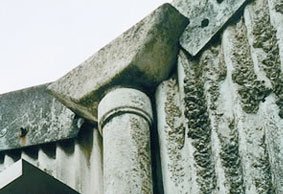
Asbestos cement downpipe, hopper and profile sheet
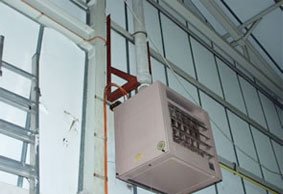
Asbestos cement flue from ventilation unit
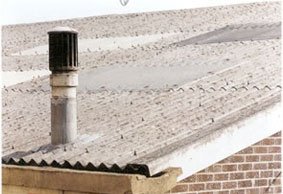
Asbestos cement roof panelling
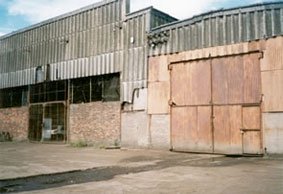
Asbestos cement wall cladding on warehouse
How dangerous is this?
Work on any type of asbestos can be dangerous. Work with asbestos cement can be carried out by non-licensed workers who are appropriately trained. This work would generally not need to be notified.
If the work is likely to cause a significant break-up and deterioration of the material e.g 'dropping an asbestos cement roof' then notification would be required.
There may be very exceptional circumstances where the asbestos cement has been so badly damaged that there is a significant risk of exposure to asbestos fibres. In these rare cases, a risk assessment will help to determine if a licensed contractor is required.
Asbestos essentials include a number of task sheets that will show you how to safely carry out non-licensed work on asbestos cement products.
If there is uncertainty as to whether a material is asbestos cement then a competent asbestos analyst will be able to carry out a water absorption test. This will determine if the material is asbestos cement or if it is another asbestos material that may require a licensed contractor to carry out the work.
Where do you find this?
This was used to insulate industrial and domestic premises so can be found in between cavity walls, under floorboards and in loft spaces.
What does this look like?
This is a loose, fluffy insulation material (similar to candyfloss), which may be blue-grey or whitish in colour.
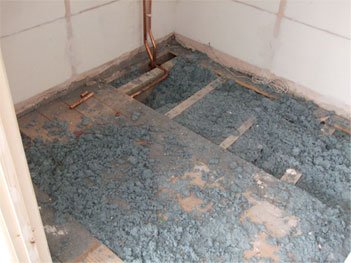
Loose fill asbestos fibres

Release of loose fill asbestos fibres
How dangerous is this?
Probably the most dangerous asbestos-containing material. Loose-fill is made up of pure asbestos and if disturbed can release large amounts of fibres into the air, where they can be breathed in.
Where do you find this?
Mostly found in or on heating systems such as around boilers or calorifiers and around pipework.
What does this look like?
This type of asbestos has many different appearances but is mostly a fibrous material that flakes and powders easily. When applied to pipes it is often covered in a protective coating (or painted) which can be any colour and may make it more difficult to identify.

Damaged asbestos pipe lagging
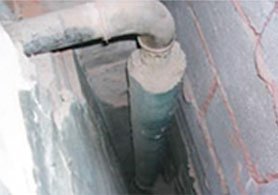
Lagged pipe in wall cavity
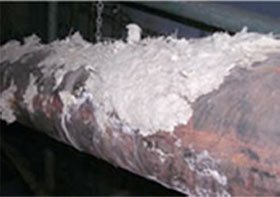
Amosite pipe lagging in very poor condition
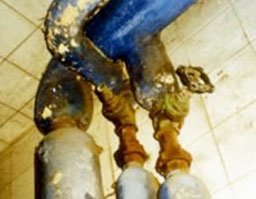
Asbestos lagging on hotwater pipes
How dangerous is this?
This is one of the most dangerous materials containing asbestos. You are more at risk from breathing in asbestos fibres because disturbance of the lagging or insulation releases fibres very easily into the air that you breathe.
Where do you find this?
Asbestos Insulating Board was commonly used as fireproofing material but it had many other uses such as:
- Partition walls
- Fireproofing panels in fire doors
- Lift shaft linings
- Asbestos tiles
- Soffits
- Panels below windows
What does this look like?
Normal building items such as wall panels boards, ceiling tiles and plasterboard. It is difficult to tell the difference between asbestos insulating board items and non-asbestos materials.
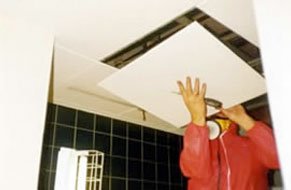
AIB ceiling tile
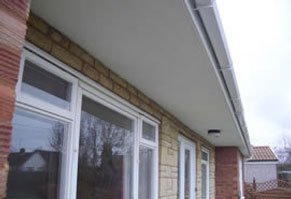
AIB ceiling tile
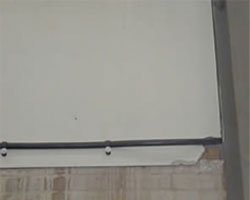
AIB cabinet
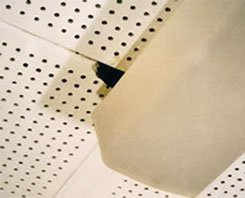
Damaged perforated ceiling tile
How dangerous is this and how to remove the asbestos?
Work on any type of asbestos can be dangerous. However, some short-duration work (less than 1 hour for 1 person in a 7 day period, not to exceed 2 hours spent by all workers) for small or minor tasks on AIB can be carried out by non-licensed workers who are appropriately trained.
Short duration work to remove AIB as part of demolition or major refurbishment would be notifiable.
Any work lasting more than 1 hour for 1 person in a 7 day period, or more than 2 hours by all workers would require a licensed contractor.
Asbestos essentials include a number of task sheets that will show you how to safely carry out non-licensed work on AIB.
Where do you find this?
Asbestos floor tiles were once a popular choice for flooring, and you will often find old asbestos floor tiles hidden under carpets.
Textiles can be found in fuse boxes behind the actual fuse. Old fire blankets and heat-resistant gloves can also be made out of asbestos textiles.
Asbestos composites can be toilet cisterns and seats, window sills, and bath panels.
Asbestos paper was used for lining under tiles and inside the metal cladding.
What does this look like?
These asbestos-containing materials are not very distinctive from what is used now. To make sure we recommend you ask the owners about how long they've had certain things or look for a trading name. You should be able to look up this trade name on the internet to find out more about it.
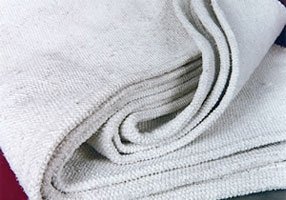
Asbestos fire blanket
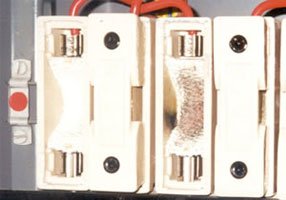
Asbestos flash guards in fuse box
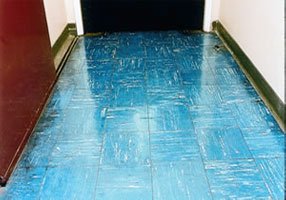
Asbestos containing vinyl floor tiles
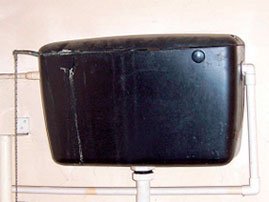
Toilet cistern containing asbestos reinforced materials
How dangerous is this and how to remove the asbestos?
Work on any type of asbestos can be dangerous. However, tasks on these particular materials can be carried out by non-licensed workers who are appropriately trained. Work on these materials would not normally be notifiable provided that the material is in good condition.
If the work is likely to cause a significant break-up and deterioration of the material then notification would be required.
Where do you find this?
Asbestos rope seals and gaskets can be found in gas or electric heating appliances.
What does this look like?
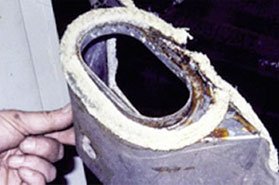
Asbestos rope seal on boiler
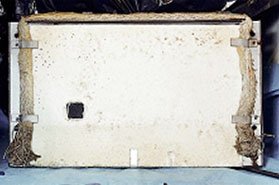
Asbestos rope seal on boiler
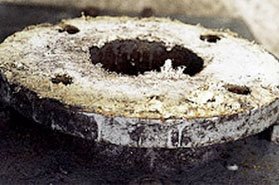
Asbestos gasket
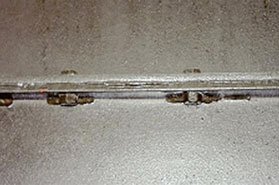
Asbestos string gasket between metal sheets
How dangerous is this and getting support with disposal?
Work on any type of asbestos can be dangerous. However, tasks on these particular materials can be carried out by non-licensed workers who are appropriately trained. Maintenance and low-risk work such as removal of gaskets or rope which can be removed virtually intact without substantial breakage would not normally be notifiable provided that the material is in good condition.
If the work is likely to cause a significant break-up and deterioration of the material then notification would be required.
Asbestos essentials include a number of task sheets that will show you how to safely carry out non-licensed work on these materials.
Where do you find this?
Asbestos roofing felt was often used for garage roofs, outbuildings etc.
What does this look like?

Asbestos roofing felt

Asbestos roofing felt being cut
How dangerous is this?
Work on any type of asbestos can be dangerous. However, tasks on these particular materials can be carried out by non-licensed workers who are appropriately trained. Work on the roofing felt would not normally be notifiable provided that the material is in good condition.
If the work is likely to cause a significant break-up and deterioration of the material then notification may be required.
Asbestos essentials include a number of task sheets that will show you how to safely carry out non-licensed work on these materials.
Where do you find this?
Textured coatings were used to produce decorative finishes on ceilings and walls. In the past, they have had various trade names such as 'Artex'.
What does this look like?
This is dependent on the particular decorative finish required ie peaks or patterns. They are hard and were originally white in colour but have often been painted over.
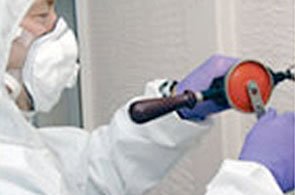
Asbestos textured coating on wall
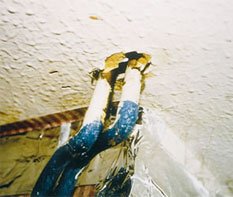
Damaged asbestos textured coating around pipework
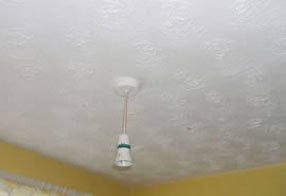
Asbestos textured coating (artex) on ceiling
How dangerous is this?
Work on any type of asbestos can be dangerous. However, tasks on these particular materials can be carried out by non-licensed workers who are appropriately trained. Work on these materials would not normally be notifiable provided that the material is in good condition.
If the work is likely to cause a significant break-up and deterioration of the material then notification would be required.
Asbestos essentials include a number of task sheets that will show you how to safely carry out non-licensed work on these materials.
For Specialist Asbestos Removal
Contact us today. Tel: 01299 251083
Email: info@safeline-env.co.uk
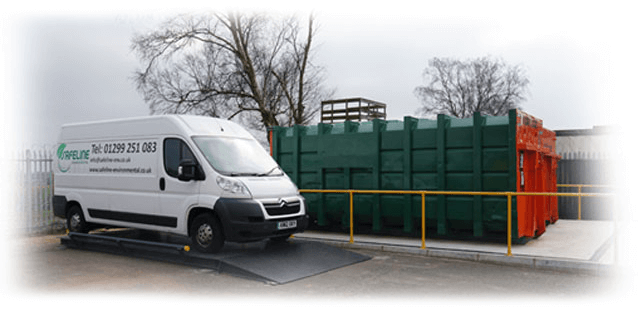
Your in safe hands with Safeline Environmental
We hope you have found our asbestos removal guide showing how to identify, manage and dispose of your asbestos useful.
Safeline is now a fully Environment Agency Permitted Waste Transfer Station for asbestos waste collection and asbestos waste disposal.
For more information regarding our specialist services, contact us today.
